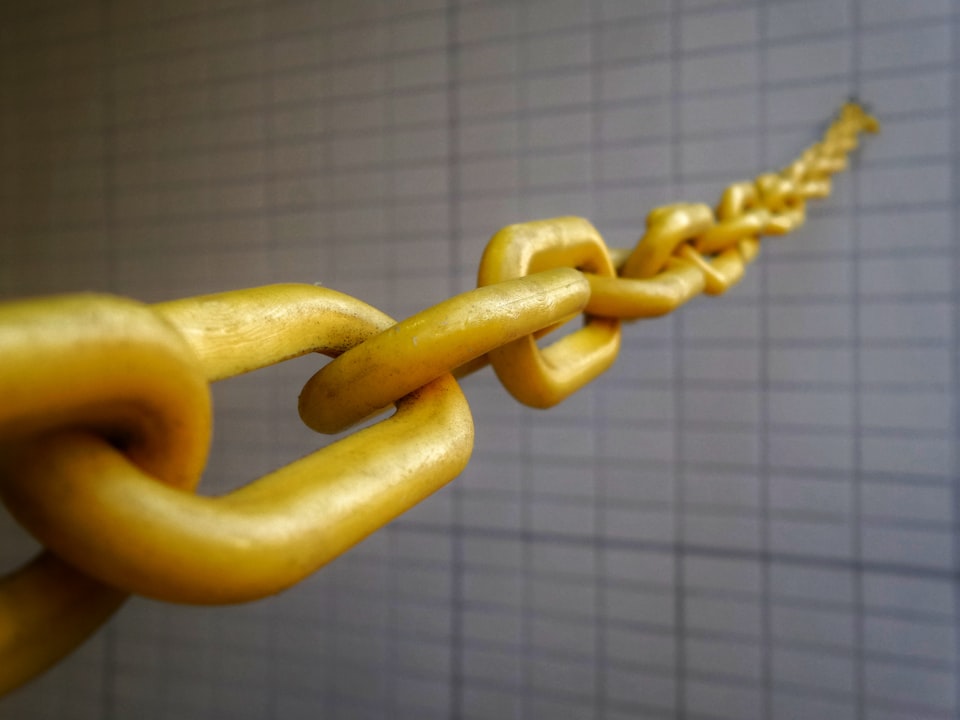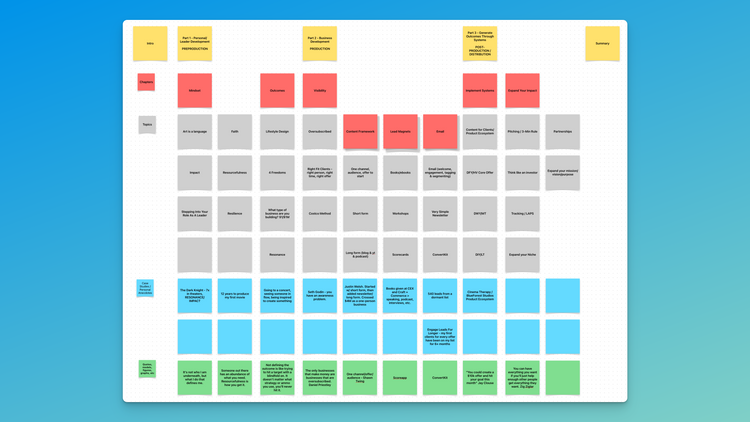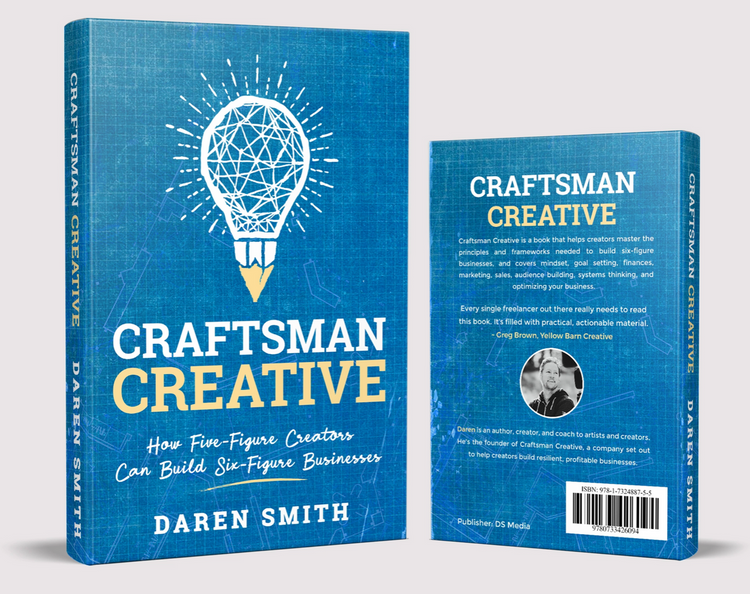Theory of Constraints

In one of my favorite reads from the last few years, The Goal, by Eliyahu Goldratt, the author tells a narrative story that teaches a profound principle.
He calls it the Theory of Constraints.
In the story, a team must solve the problems in their manufacturing plant before the plant gets shut down. They've been given three months to turn things around.
They take a different approach to not only stop the bleeding of cash but ultimately become the most profitable location in the company.
The way they did it was through the theory of constraints.
By the end of this chapter, you'll learn to be more productive and effective in the way you run your new creative business through the application of this principle.
Productivity, Goals, and Measurements
The book starts by defining productivity in a highlight that I've bolded, underlined, and highlighted in my notes:
Productivity is the act of bringing a company closer to its goal. Every action that brings a company closer to its goal is productive. Every action that does not bring a company closer to its goal is not productive.
With this definition, productivity is meaningless unless you know what your goal is. This is, in part, why this book started with your vision, purpose, and goals.
Let's take a goal that we introduced early in the book as an example - to become profitable from the start.
To determine if you're moving closer to or further away from that goal - if you're being productive or not - you measure three parts of your business:
- Throughput
- Inventory
- Operating Expense
Throughput is the rate at which your system (your business) generates money through sales.
Inventory is all the money that you've invested in purchasing things that you intend to sell.
Operational Expense is all the money your business spends in order to turn inventory into throughput.
The goal, using these definitions, is to increase throughput while simultaneously reducing both inventory and operating expense.
Said differently, sell more while spending less.
To move closer to your goal in the most efficient way possible, you use the Five Focusing Steps:
- IDENTIFY the system’s constraint.
- Decide how to EXPLOIT the system’s constraint.
- SUBORDINATE everything else to the above decisions.
- ELEVATE the system’s constraint.
- If in the previous steps a constraint has been broken Go back to step 1, but do not allow inertia to cause a system constraint.
But to do that, we need to understand what a constraint is.
Identifying the Constraints In Your Business
Broadly speaking, you can see which of the three areas - Throughput, Inventory, or Operational Expense - is holding you back from being more productive.
If you aren't selling enough products or services, the constraint may be with your throughput.
If you constantly run out of inventory or can't deliver more product or serve more clients, then your constraint would be with your inventory.
If you don't have enough capital to buy inventory or pay your team or run ads, you've got an operational expense problem.
Now, since you're a creative business owner and not the manager of a manufacturing plant, our constraints are going to be different than machinery and physical space and all of the different vendors that participate in the making of some part.
You're creating art. You're serving clients. There's likely just you.
So how do you take these five steps and identify the constraints in your business?
Let's look at my old video production company as an example.
My system wasn't working. I was trying to optimize each part of the business without understanding the relationship it had, or the theory of constraints.
I had constraints in two of these areas - we didn't have enough clients or projects (throughput), and we didn't have enough capital to invest in the business (operational expense).
Had I understood and spent time identifying the greatest constraint in my business, I would have focused on throughput.
Here's why:
Without enough demand, you could have infinite money and infinite supply, and still no profit.
Look at another example - Quibi. It was founded by some big names in the film industry at the end of 2018, raised $1.75 Billion dollars, launched at the start of the pandemic in April 2020, and then shut down in December of 2020, 8 months later, because they didn't have enough subscribers.
It was sold earlier this year to Roku for a mere $100 million dollars.
You could raise all the money in the world and still not have enough demand for your product. Their issue wasn't one of inventory or operational expense, it was one of throughput.
My production company suffered the same fate. Even after taking on debt to fix the operational expense problem, we still had a massive throughput constraint.
We didn't have enough demand.
If you want to be profitable from the start, you need to create a situation where you always have more demand for what you sell than you can supply.
If five people want to hire you for coaching, offer four slots.
Rather than simply putting your music on Spotify and Apple (unlimited supply), create 100 signed physical albums and sell them to your superfans for $50. As long as you have more than 100 people that want to buy them, you'll sell out.
I currently can only take on three feature film projects a year, because each one takes about 3.5 months to produce. I don't want to work 12 months a year with no breaks, so I only have three slots available.
If more than three people want to hire me, I'll stay busy, and I'll raise my rates with every new project.
Had I known this theory back then, I would have built a system that consistently delivered three to five new leads every week, people that were potentially interested in hiring us for video production services.
At first the system would have been manual, but I would have figured out how to outsource and automate it until it was working in the background.
With three to five new leads, I knew I would land one new client a week, and our client projects ranged from $10-20,000 each. That would have been plenty to keep us in business, and likely would have helped us grow the business and expand the team.
How do I know this would work? Because I built this automated system for Craftsman Creative.
It started as a manual process - reaching out to influencers and creators directly online. Once I figured out the script that worked best, I hired a gal on Upwork for $100 a week to find me the emails of 20 or more creators each week. She then puts those emails into a spreadsheet, which automatically pushes those emails to PersistIQ automatically and emails them four prewritten emails over three weeks.
If they respond it goes to my email and I can follow up. If not, they are taken off the list never to be bothered again.
This process gets me 1-2 calls a week with new course creators, and I have an 85% close rate on those calls.
(I actually had to turn the system off for the month of December 2021 because I was too far out with the courses that I'd already booked! The system was working too well.)
You can take the same approach to the other two constraints around inventory and operational expenses.
Following the five step process, you start by identifying the constraint in your business. You can start broad - we have an inventory constraint, there's not enough parts coming from overseas - and then narrow down.
Once you've identified the constraint, you follow the next steps to exploit, subordinate, and elevate to remove the constraint and then start over by identifying the next constraint in your business.
Doing this process all but guarantees that you'll grow your business. It works that well.
Maybe your greatest constraint is lack of awareness, or sales, or the offer. Any of the chapters in this book could shine a light on a constraint in your business.
Using the theory of constraints, you are now empowered to go identify the constraints in your business and take action to improve your business.
NEXT CHAPTER >

< PREVIOUS CHAPTER








Member discussion